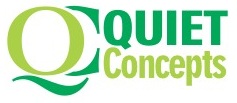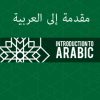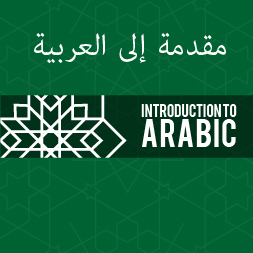THE IMPACT OF MULTI-MEDIA INSTRUCTIONAL MATERIALS ON ATTITUDE AND PERFORMANCE OF SENIOR SECONDARY STUDENTS IN AGRICULTURAL SCIENCE IN BEST LEGACY INTERNATIONAL SECONDARY SCHOOL
₦3,000.00
The study sought to determine the impacts of multi-media instructional materials on attitude and Performance of Senior Secondary Students in Agriculture. It also sought to determine the difference in the performance of students taught with computer-based multimedia presentation and those taught with conventional method.
Description
INTRODUCTION
1.1 Background to the study
There is no nation in the world that does not engage in Agricultural production. As a result, agriculture as a subject learnt in secondary schools is a lucrative subject all over the world. It is not a gain saying while saying that agriculture plays important roles in the economic development of all nations especially Nigeria and other developing countries (Adekoya & Olatoye, 2011). The importance of agriculture includes: Provision of food, employment for the working population, source of foreign exchange, generation of income for farmers, provision of materials for shelter, provision of facilities for recreation and tourism, provision of raw materials for industries and market for industrial goods (Apantaku, 2004; lwena, 2002).
There has been a drastic reduction in the standard of performance by students in science and technology at all levels of education in Nigeria (Emaikwu, 2012). The poor performance of students in science subjects has assumed a dangerous dimension. In the light of this, science educators need to seek suitable ways of tackling the current mass failure if they are to prevent the drifts of students to arts and social science subjects. The relevance and importance of agricultural science among the science subjects and its importance to economic development cannot be overemphasized. There is need for proper teaching of the subject in secondary schools so that students’ scores in internal and external examinations will be high, thereby making the candidates’ entrance into higher institutions easier (Akeem, 2007). The inadequacy of conventional teaching methods to improve students’ interest, performance and retention has become a source of concern to many educators. Therefore, teachers should be well equipped with the necessary 21st century skills needed for use in teaching school subjects if students’ are to learn maximally (Nowak, Watt, Walther, 2004; Olori, 2010;Onabanjo, 2006).
The mode by which teacher presents instruction affect attitude and response from the students and determines whether they are interested, motivated and involved in a lesson in such a way as to engage in a good learning (Mtsem, 2011). What constitutes the 21st century skill for teachers is the use of appropriate technology, content and pedagogy in the classroom. Mishra and Koehler (2008) argue that teachers need to develop technological pedagogical content knowledge (TPACK) in order to be successful users of technology in their teaching. Thompson and Mishra (2007) added that capable teachers must be able to flexibly incorporate new resources including technology into their knowledge of subject pedagogy in ways that enhance learning.
Abdulhamid (2010) submitted that studies have shown, that the performance of the students in agricultural science and practical agriculture in high schools respectively is not encouraging. lkot (2008) also noted that the poor performance of students in agricultural science examinations may not be unconnected with non-utilization of suitable instructional technologies. Many teachers go to classes to teach agricultural science and practical agriculture as liberal arts without any material to assist them or the learners. Learning is facilitated when the learners make use of at least three of the sense organs namely: seeing, hearing and touching (Nsa, 2012; Oke, 2002).
Instructional technologies are the devices developed or acquired to assist or facilitate teachers in transmitting organized knowledge skills and attitudes to the learners within an instructional situation (Nwachukwu, 2006). Teachers use different instructional technologies to motivate learning. Different researchers have carried out study on the academic performanceof students in Agricultural science with the use of instructional materials. ln a study to determine the effects of instructional materials utilization on performance of Senior Secondary Students’ in Practical Agriculture in lkot-Abasi Local Government Area, lkot (2008) adopted a quasi-experimental design using the population of 1995 students and the intact class sample size of 225 students. The findings showed that there was significant difference between the performance of students taught with filmstrip and those taught without filmstrip. Abass, Bimbo and Ojo (2012) in a study to determine the effects of Animated Agricultural Science instructional packages on Attitude and performance of Junior Secondary school Students in South West Area, Nigeria, discovered that the animated Agricultural Science Instructional packages significantly influenced the academic performance of the selected students. Osokoya (2007) in a study to determine the effects of videotaped instruction on Secondary School students’ performance in History discovered that there was significant difference between the mean scores of students taught history with video-taped instructional packages and those taught with the conventional lecture method.
Computer-based multimedia (CBMI) presentation is the delivery of multimedia content by means of a computer to achieve learning goals through desired outcomes (Hillis, 2008; Yang, 2009). Multimedia is the ability of a system to communicate information simultaneously through multiple media: text, still images, graphics, photos, animated images, movies and sound. The emergence of new technologies has resulted in increased use of multimedia for teaching and learning in education (Omoniyi, 2005). Multimedia technologies have always fascinated educationists because of its strengths to communicate difficult concepts in simple ways. With the availability of more and more sophisticated computers with multimedia capabilities, the potentialities to use multimedia have also grown tremendously. Computer-based instruction brings with it several potential benefits as a teaching/learning medium. These include self—paced learning, self-directed learning, the exercising of various senses and the ability to represent content in a variety of media.
Various studies on learning styles have shown that when learners can learn in a way that suits them, improvements in the effectiveness of the learning process normally ensue (Wabuyele, 2006). Alabi (2011), in a studied that investigated the influence of multimedia on students attitude towards learning reported that multimedia presentation encouraged learning as they provided a stimulating environment and promoted enthusiasm. A multimedia based learning environment helps reserved students who are afraid to make mistakes in a classroom situation (Benedict,2010).The use of computer- based multimedia presentation in carrying out instruction is an innovation in educational technology (Libin Yang,2005). This mode of technology utilizes computer as a medium of presentation in form of text, pictures, graphics, tables and animations. The most important advantage of using computer as a demonstrator is that demonstration and illustration whether simple or complex can be placed under the control of the students, to be repeated, interrupted, slowed down, or even reversed at will (Adesanya, 2004). With the help of computer-based multimedia presentation, the teacher can make the content of the course lively and vivid to arouse the attention of the students (Olori, 2010).
Computer-based multimedia presentation is not without its problems because with self-access programmes, learners can be left on their own too much and may feel overwhelmed by the information and resources available (Khoo, 2008; Rosenberg, Sander & Posluns, 2005). On the other hand, there may be too much direction from the computer if classroom methods are transferred to the computer. lt must be noted that while various CBI models exist, not all CBI programmes offer all the benefits of CBI. Sometimes what is theoretically advocated is not implemented in practice, either due to lack of knowledge or technological unfeasibility (Aly, Elen, Willems, 2004). With all these shortcomings, the researcher still believed that this instructional method is still appropriate to use in this century classrooms to make an improvement upon students learning. The present study examined the impacts of multimedia instructional materials on attitudes and performance of senior secondary students.
1.2 Statement of the problem
Several studies have shown that chalk and talk method of teaching Agricultural Science in Nigeria Secondary Schools has not been effective in developing the vocational skills necessary for agricultural development as stated in the National policy on Education. It is also known that agricultural science is taught in the classroom theoretically without practical demonstration of facts. As a result of poor instructional presentation, students see the subject as difficult, hence they develop negative attitude towards it. One of the factors militating against students’ performancein the subject is lack of relevant instructional media.
However, despite the availability of ICT-based instructional packages in the market, many teachers hardly use them in the classroom. Therefore, this study seeks to investigate the Impacts of multi-media instructional materials on attitude and performance of senior secondary students in agriculture science.
1.3 Research Questions
What is the Significant Effects of Multi-media Instructional materials on performance of secondary school students in Agricultural science?
To what extent does multi-media instructional material assist the educational performance of students in Agricultural science in senior secondary school students of Best Legacy international Secondary School, Awe?
Of what significant difference between the educational performance between students who are thought with multi-media instructional aid and conventional instructional aids perform in Best Legacy International Secondary School, Awe performed in agriculture science?
1.4 Purpose of the study
The study sought to determine the impacts of multi-media instructional materials on attitude and Performance of Senior Secondary Students in Agriculture. It also sought to determine the difference in the performance of students taught with computer-based multimedia presentation and those taught with conventional method.
1.5 Significance of the Study
The main purpose of this study is to Impacts of multi-media instructional materials on attitude and performance of senior secondary students in agriculture in Legacy International Secondary School, Awe. The study is significant because it reveals the impact of multi-media on the betterment of educational performance of senior secondary school students. The research work will also be useful for education planner in the school, the State government and Federal Government at large to know how to prepare adequate teaching facilities for senior secondary school students in general.
1.6 Scope and Limitation of the Study
The study is focused on senior secondary students of Best Legacy International Secondary School, Awe.
1.7 Operational Definition of Terms
Agricultural Science: This is a science subject relating with the planting of crops and rearing of animals.
Instruction: In this study, instruction was considered as the integration of both method and media. This definition leads to the need for careful consideration of media along with the instructional methods during teaching-learning process. With the introduction of new media, the challenge is to use them effectively and transfer knowledge to the learner. Multimedia: in this study, it is the combination of several media sources such as video, graphics, animation, audio, and text, accessed by a computer and attached peripherals driven by special programs.
Conventional methods of instruction: refer to instructor-led lectures without the inclusion of any type of technology-based material such as PowerPoint slides, while technology—based methods of instruction include the use of any technology media resource.







Reviews
There are no reviews yet.